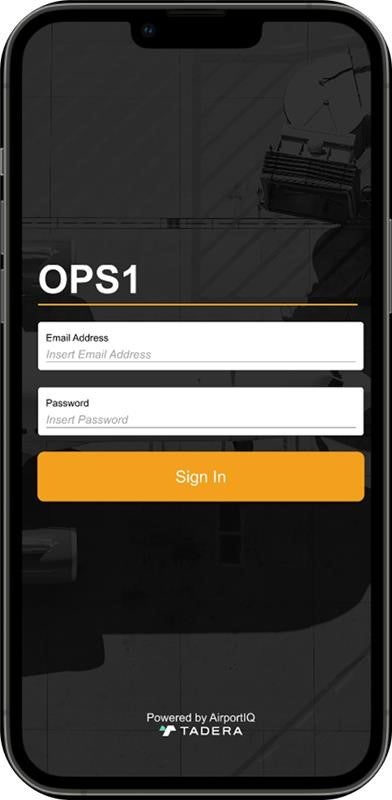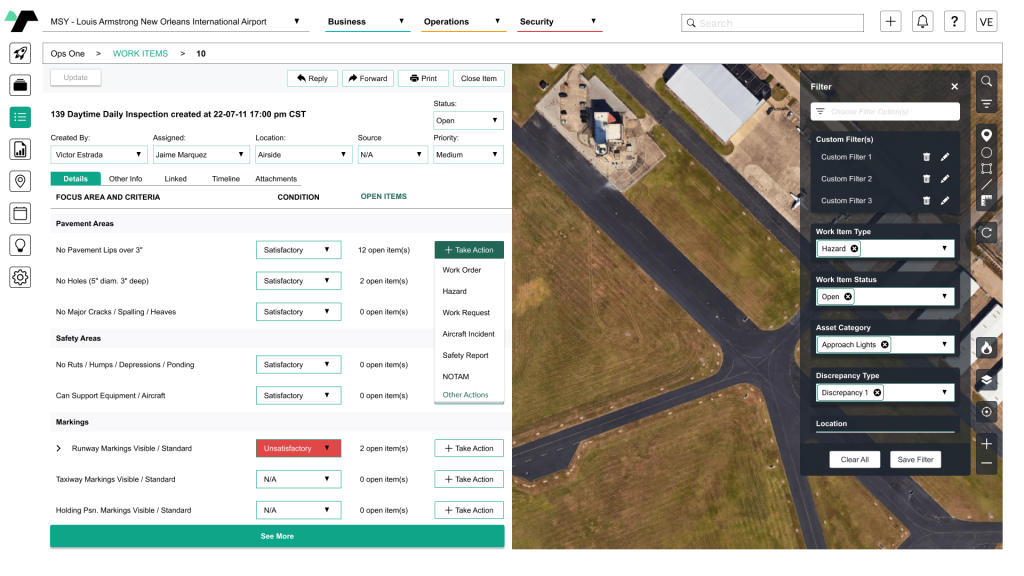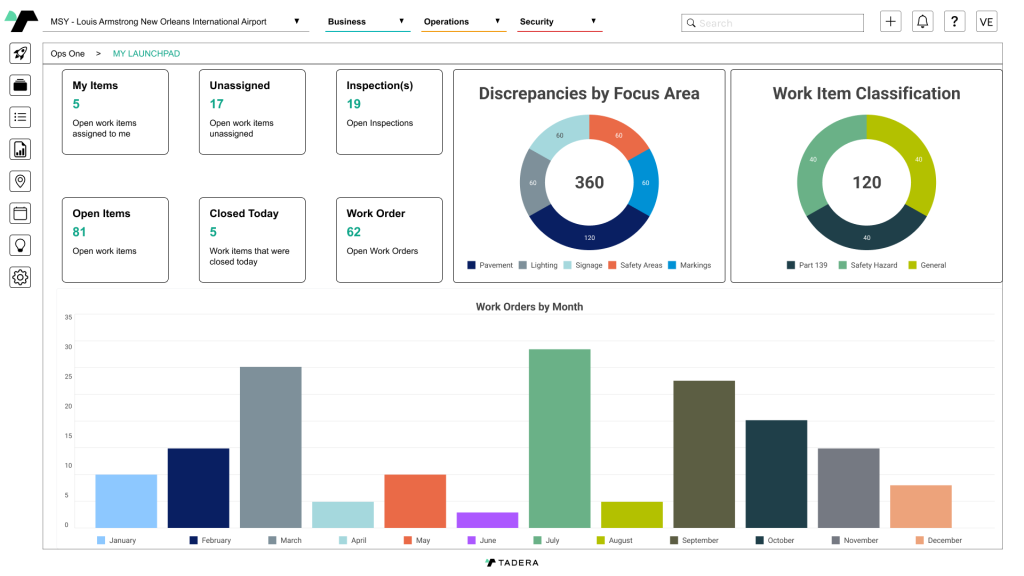
TADERA has won the Product Launches award in the Safety and Efficiency category in the 2025 Airport Technology Excellence Awards for launching OPS1, a state-of-the-art software solution designed to enhance airports’ operational efficiency and safety. TADERA is a software solutions and integrated technology provider serving airports across the United States.
The Airport Technology Excellence Awards honor the most significant advancements and innovations in airport infrastructure. Powered by GlobalData’s business intelligence, the Awards recognize the people and companies leading change and shaping the future of the industry.
With OPS1, airports can incorporate modern technology into their daily operations workflows, allowing them to streamline processes and promote a culture of safety, setting a new standard for the industry.
Modern technology enhances operational efficiency



“Our vision for OPS1 is to revolutionize airport operations by delivering a modern, integrated system that simplifies processes and enhances efficiency,” said Bryan Helaire, Vice President of Product and Customer Success at TADERA. “OPS1 provides the teams that manage inspections, safety, work orders, and maintenance with a shared source of information, allowing them to streamline their efforts. In addition, through tools like the form builder and workflow manager, leaders and staff can customize systems and processes specifically for their airport. We are excited to introduce OPS1 to airports across the country.”
TADERA has long been a leader in providing technology solutions for airport operations. Its Airport Safety, Operations, and Compliance System, or ASOCS, has been utilized by airports since 2000. OPS1 is a cutting-edge product designed to enhance efficiency for airport operations, safety, and maintenance teams. It provides tools for daily tasks and ensures that information about the airport’s operational status and compliance records is accessible to both these teams and airport leadership. With OPS1, airport staff can easily set up their environment according to their airport’s specific layout and assets, staffing, and data requirements while also utilizing best-in-class, out-of-box forms, reports, and workflows. This allows an airport to quickly get up and running with OPS1 while tailoring the system to their unique compliance data collection and reporting needs.
OPS1 empowers airports to harness the full potential of their Geographic Information System (GIS) data. Through OPS1, airports can visualize assets such as runway lights, taxiway lights, and signage on a map, while managing inspections, safety, and maintenance through a single source of truth. This allows airport staff to easily identify assets for corrective maintenance, perform real-time reporting of events and safety hazards and obtain insights about the operational status and safety of the airport in a streamlined and efficient manner.

The GIS data integration also enhances situational awareness by allowing teams to visualize operational data on interactive maps. This feature is particularly useful during emergencies or high-traffic periods, as it enables staff to quickly assess the status of various airport assets and make informed decisions. It’s similarly useful for day-to-day operations; for example, airport staff can create custom map filter views to display safety hazards on a heat map, allowing them to conduct trend analyses or identify root causes of safety issues. By offering map-centric experiences, OPS1 significantly boosts situational awareness among airport staff.
Furthermore, OPS1 automates various processes that traditionally consumed valuable time and resources. For instance, maintenance tasks can be scheduled and tracked automatically, ensuring that critical operations are not overlooked. This improves response times and simplifies operations, creating a safer airport environment where staff can focus on core responsibilities without manual task burdens. The result is a more agile operation that enhances both safety protocols and overall efficiency. Finally, OPS1 incorporates streamlined workflows that allow airport personnel to navigate the system with ease, reducing the learning curve for new users. For example, real-time dashboards display critical operational metrics, enabling staff to monitor performance indicators such as incidents, work orders, and inspections.
Strengthening operational safety management and compliance

Safety is paramount in airport operations, and TADERA’s OPS1 addresses this need with a comprehensive Safety Management System (SMS) module. This module enables airports to develop effective safety risk management programs and ensure regulatory compliance with the FAA’s Airport Safety Management System Final Rule. Integrated seamlessly into the OPS1 platform, the SMS module allows users to quickly identify hazards, perform Safety Risk Assessments (SRAs), develop Mitigation Action Plans, implement risk controls, and document safety inspections. Safety staff can also stay proactive by conducting SRAs for upcoming construction projects, events, or changes in operations. By leveraging OPS1’s FAA-approved Self-Inspection templates and SMS tools in a single environment, airports can maintain Part 139 compliance and confidently prepare for audits and inspections, knowing that all necessary documentation is readily available.
OPS1 also promotes a culture of safety by enabling public hazard reporting. Users can report safety hazards anonymously and confidentially via mobile devices, capturing detailed incident data including photos and geolocation. For instance, if an employee notices a safety issue, such as an unsafe act on the ramp or improper staging of ground support equipment, they can quickly report it through OPS1, ensuring that management can address the issue promptly. By fostering accountability and encouraging proactive reporting, OPS1 empowers airport personnel to take ownership of safety issues, ultimately enhancing the overall safety landscape.
Transforming operational data into actionable intelligence
OPS1 also transforms data into actionable intelligence. The software provides dynamic reporting tools that offer real-time insights into critical areas such as incidents, work orders, and inspections. For example, airport managers can generate reports that highlight trends in safety incidents over time, allowing them to identify patterns and implement preventive measures or proactive maintenance.
This capability allows teams to make data-driven decisions that improve operational efficiency and enhance compliance tracking. By analyzing data from various sources within the airport’s operations, such as incident reports, equipment performance metrics, and inspection results, OPS1 enables decision-makers to allocate resources more effectively and optimize workflows. For instance, if data indicates that certain maintenance tasks are consistently delayed, management can investigate the root causes and implement changes to improve efficiency.

OPS1 streamlines inspection processes by identifying, tracking, and managing discrepancies and assets through digital tracking of Notices to Airmen (NOTAMs) and navigational aids (NAVAIDs) in addition to traditional work orders. Configurable checklists ensure that all necessary steps are followed during inspections, reducing the likelihood of errors. Actionable reporting further optimizes maintenance activities by providing insights into asset performance and maintenance history. This ensures that airports can operate at peak performance while maintaining high safety standards.
Company Profile
GCR Inc., DBA TADERA was incorporated in 1979 as Gregory C. Rigamer Associates, Inc., with the goal of providing software and services to the airport market. In 2023, GCR Inc. was acquired by Modaxo, a global technology organization committed to delivering software and technology solutions that help connect people with the places they need to go for work, family, and everyday life. TADERA is headquartered in New Orleans, LA, and has an office in Monterrey, Mexico, as well as staff members based across the USA and Canada.
OPS1 is the next generation solution of TADERA’s Airport Safety, Operations, and Compliance System (ASOCS), which was initially developed in 2000 and has been utilized by airports across the United States to manage Part 139 inspections and other compliance processes. OPS1 features a modern user interface and GIS data integration for real-time insights and team collaboration. It enhances airport efficiency by automating processes, improving response times, and tracking compliance. The analytics and reporting tools offer visibility into operations, aiding decision-making and performance. Additionally, the Safety Management System (SMS) module ensures regulatory compliance and risk management. OPS1 allows airports to streamline operations, enabling staff to work more effectively and enhancing passenger travel experiences.
The system includes many features that will bring value to airports, including a single platform to manage Part 139, Safety Management, Work Orders, and Asset Management. OPS1 features standard and customizable forms, checklists, and reports that allow staff to conduct self-inspections and corrective actions to meet FAR Part 139 requirements and anonymously report safety hazards. Users can also use the OPS1 Mobile app in the field, allowing them to complete inspections, submit safety hazards, and manage other tasks from any mobile device. Finally, OPS1 allows airports to organize and manage their assets, including airfield signs, runway lights, taxiway lights, obstruction lights, and NAVAIDS. The ability to display these resources on any map becomes a powerful visual aid for quickly assessing compliance and prioritizing corrective maintenance issues. Importing and managing assets also allows an airport to easily commission/decommission assets to keep their airport environment current as new construction occurs, new assets are installed, or existing assets reach end of life.
Links
Website: www.tadera.com








